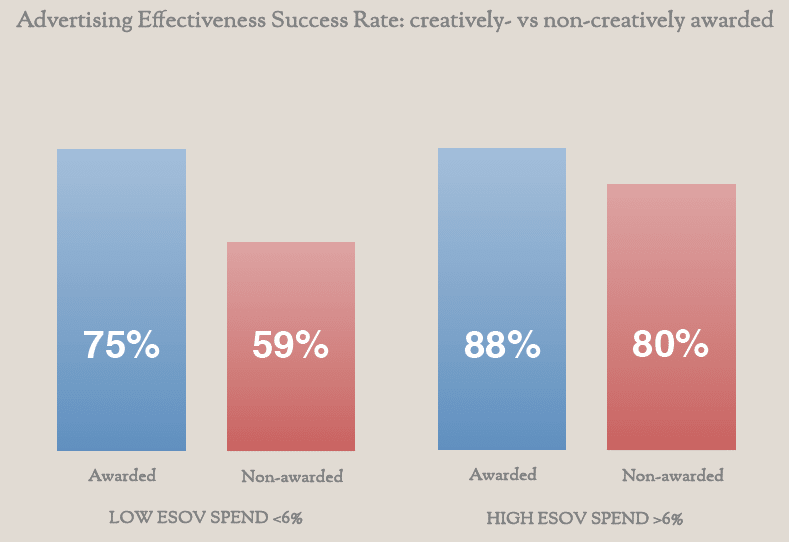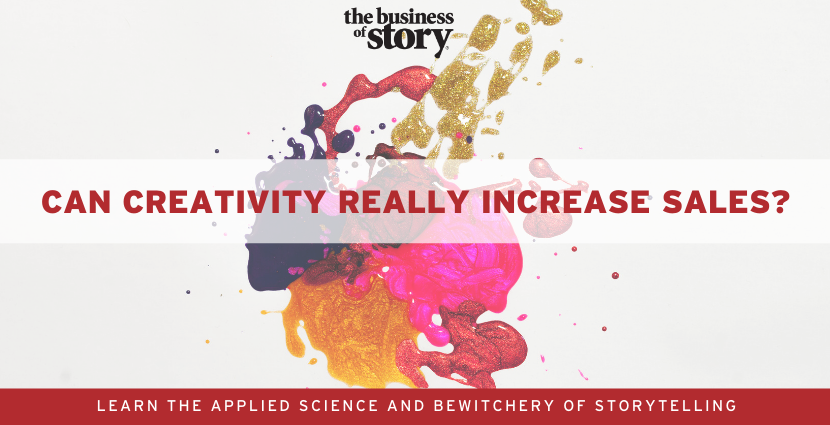Do award-winning TV spots generate more sales than your typical, “50% off, buy now, this weekend only!” commercial?
“Absolutely!” according to a 10-year global study of creativity and advertising that is the basis for the new book, The Case for Creativity by James Hurman.
I have yet to read the book, but the deck is compelling.
I found the sixth slide in the deck particularly interesting, so I had to wrap some pop neuroscience around it. One of the studies found that creatively awarded campaigns are 27% more effective in low-spend campaigns, and 10% more effective in high-spend campaigns.
Here’s why…

Neuroscience has proven that the mind is all about self-preservation and attempts to operate as efficiently as possible. In the age of mass media and constant bombardment of information that the web has brought to our lives, the mind works harder to store similar data and uses shortcuts to connect the dots instead of constantly having to process the information. Essentially, it makes itself tone-deaf to outside stimuli it immediately recognizes unless that stimulus is of a disruptive nature.
Therefore, it makes sense that highly creative and stimulating ads would have a greater impact in low budget campaigns over boring advertising, because the brain would tend to recognize the “feature and benefits” advertising as same old, same old, and relegate those commercials to the data basement, while the highly disruptive ads would get its attention and spur it into action.
What levels the playing field is the ad spend. Think about it: If I pour a bunch of money into any campaign using the same commercial – which it seems every advertiser is doing these days – that commercial, whether creative or not, is going to get imprinted and filed in our auto data processing centers purely due to repetition. The brain will still act upon the call-to-action, providing it is compelling enough, even if it’s not delivered creatively.
Therefore, small budgets require highly creative campaigns, while big budgets, one might argue, would be more effective with more highly creative ads run in rotation to offset the repetition of the bad ads they’re competing against.
What do you think?











